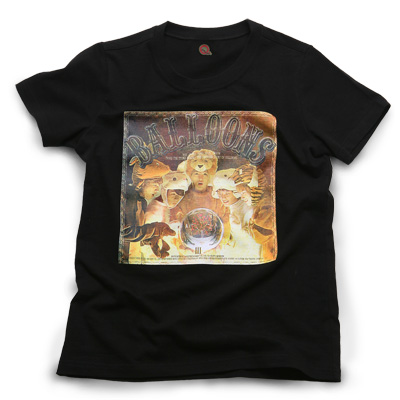

~by Edgar Allen Poe
It was many and many a year ago,

----And this one......is fantastic.------



-------That's whay i have to tell you......
ROMANTIC POEM

Recuerdo aquel día como si fuese hoy, fue el día que mi corazón se partió para siempre.
Era una tarde de invierno, el cielo estaba gris, todo era muy triste hasta...que te vi a ti, en aquel momento los rayos de sol empezaron a salir de mi corazón, aquella mirada entró hasta lo más profundo de mi alma.
Nos presentaron y te di dos tímidos besos, para ti sólo eran eso, besos, pero para mi... era algo más, el primer contacto que tenía con el que iba a ser el amor de mi vida.
Nos fuimos haciendo cada vez más amigos, tú no lo notabas pero yo moría por una simple sonrisa tuya, soñaba con llegar a sentir algún día tus labios sobre los míos, pero solo eran eso, sueños.
Yo te veía con otras y eso para mi era como un puñal clavado directamente al corazón.
Mis amigas me decían que te contara lo que sentía por ti, pero no podía, tenia tanto miedo a tu rechazo que prefería seguir con la amarga agonía de ser simplemente tu amiga.
Hoy sigo soñando con tener tu amor y tú... me sigues llamando amiga.
Espero tener valor para decirte lo que siento antes de que sea demasiado tarde...

THE TRADITION OF SAINT VALENTINE'S DAY
According to other sources, the tradition of Valentine's Day is derived from a time when hordes of ravenous wolves roamed the immense wilderness area outside Rome where shepherds (the city's earliest inhabitants) kept their flocks. The God Lupercus (from the Latin lupus meaning "wolf") was believed to watch over the herdsmen and their animals and keep them safe from the hungry predators. Every February, in this scenario, the Romans celebrated a feast (also known as Lupercalia) to honor Lupercus in order that no harm would come to the shepherds and their flocks. This celebration continued to be held long after wolves no longer presented a problem to the Roman countryside. Yet another theory on the ceremonial source of this day is that the festival was actually held to honor Faunus who, like the Greek God Pan, was a God of Herds and Crops. As is apparent, the true origin of this festival is so ancient, that even scholars of the Last Century B.C. were unable to officially determine its roots with any degree of certainty. However, there is no question about the importance of the ceremony. Records show that Mark Anthony was Master of the Luperci Colleges of Priests and chose the Lupercalia festival of the year 44 B.C. as the proper time for the offering of the crown to Julius Caesar.
With the advent of Christianity, priests attempted to replace such ancient heathen practices. In the Fifth Century A.D., the Church resolved to abolish this pagan celebration by creating its own holiday around the same date and selecting a saint who was remembered for his devotion to love. In A.D. 496, Pope Gelasius outlawed the Lupercian Festival, but cleverly retained the Juno Februata lottery. However, in order to lend the festivities Christian meaning and eliminate the pagan overtones, the drawing of saints' names were substituted for the names of unmarried girls. The names were placed into an urn or box and then young people (both male and female) drew a name from the container. During year which followed, the youths and maidens were supposed to emulate the life of the Saint whose name they had drawn. It took some time for this new tradition to garner popularity, but eventually more and more Romans relinquished the Lupercian ceremonies. Nonetheless, young Roman males, who had been hoping to meet potential mates during the time of the Festival, were not totally satisfied with now having a lottery of saints' names instead, and insituted their own custom of offering women whom they admired and wished to court handwritten greetings of affection on February 14. By the Fourteenth Century, the Church had reverted back to the use of of girls' names. During the Sixteenth Century, Saint Francis de Sales, Bishop of Geveva, made another attempt was made to institute Saintly Valentines, but it proved equally (of not more) unsuccessful as the first and was certainly shorter-lived. Eventually, the Church looked for a suitable Patron Saint of Love to take the place of the heathen Lupercus. They found an appropriate choice in Saint Valentine.
During the medieval era of chivalry, the names of English maidens and bachelors were put into boxes and drawn out in pairs. Each couple exchanged gifts and the girl became the man's sweetheart for a year. He wore her name on his sleeve and was bound by duty to attend and protect her (the accepted origin of the phrase, "to wear one's heart on one's sleeve"). This old custom of drawing names was considered a good omen for love and often foretold a wedding. In 1537, King Henry VIII declared, by Royal Charter, that all England would celebrate February 14 as "Saint Valentine's Day" and with the passage of time, February 14 became the traditional date for exchanging love messages and simple gifts (such as flowers or candy), with Saint Valentine becoming the accepted Patron Saint of Lovers.
Approximately one billion Valentine cards are exchanged each year...the largest seasonal card-selling occasion of the year next to Christmas. Most Valentine's Day cards (83%) are purchased by women. However, the number of cards purchased by men (currently 17%) is gradually rising, thought by some sources to be due to the fact that men often purchase two cards for their siginificant others...an amusing one and the obligatory romantic one which they believe is expected of them. Half of all consumers prefer to receive a humorous Valentine, followed by a romantic greeting (31%) and then a more risque form of card (8.2%). More than one-third of women (36%) and 26% of males prefer to receive a romantic Valentine. 13% of males prefer a more sexy Valentine, whereas only 3.5% of women prefer this variety of card. February 14 is the most important holiday for florists, accounting for 32% of annual sales. 73% of people who buy flowers to send on Valentine's Day are male...only 27% are female. California produces 60% of American roses, but the vast majority sold on Valentine's Day in the United States are imported...mostly from South America. Approximately 110 million roses...the majority of them being red...will be sold and delivered within a three-day time period during the Valentine's Day celebrations. 36% of males and 28% of females put off their Valentine's Day shopping until February 14 or the day before...64% of consumers will plan to do their shopping a week or more prior to the date. Males tend to spend more money on Valentine's Day gifts than do females and are more likely to buy big-ticket items...the average amount spent being $95.00. Approximately 3% of pet owners will give a Valentine's Day gift to their pet. Alexander Graham Bell applied for his patent on the telephone on Valentine's Day in 1876. The chief colors associated with Valentine's Day are pink, red and white. Pink is a delicate, almost innocent shade of red and is also connected with Saint Valentine, whose burial was said to have caused the pink almond tree to blossom. Red is a symbol of warmth and feeling...the color of the heart, while white represents purity and faith...a faith between two who love each other.























































